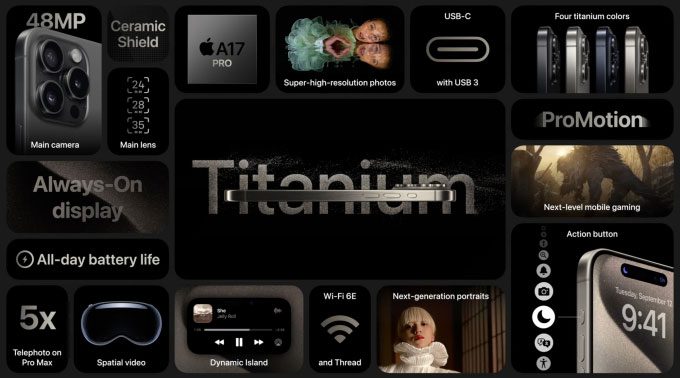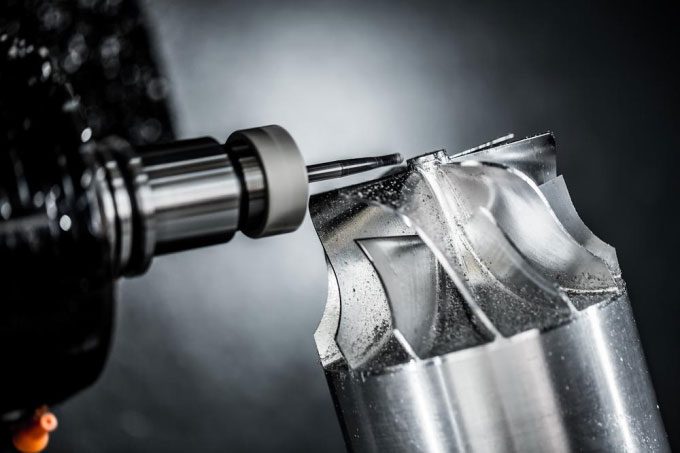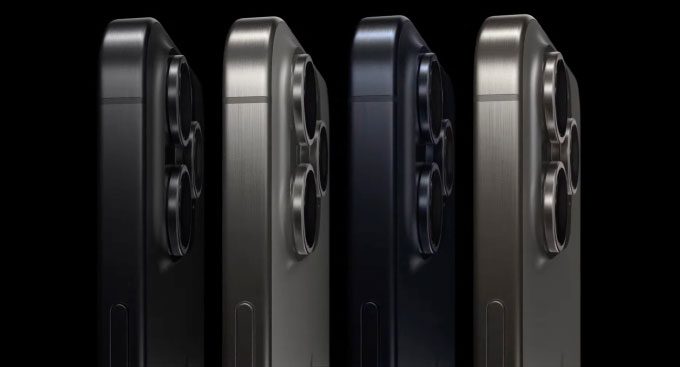Apple has chosen a lightweight yet durable material as the protective armor for its new smartphone line.
At the Wonderlust event held in the early hours of September 13, Vietnam time, Apple unveiled a series of new devices to the anticipation of tech enthusiasts worldwide. As usual, the iPhone smartphone model was the focal point of attention with new materials, new buttons, new chips, and a host of valuable upgrades.
However, for many users, what they are most concerned about is the appearance of the latest iPhone 15 models. Understanding the aesthetic passion of iFans, Apple announced the use of titanium for the device casing, a first for this generation of devices, alongside a range of brand-defining colors including Black Titanium, White Titanium, Blue Titanium, and Natural Titanium.
And there’s one more thing…

The iPhone 15 series made from titanium alloy – (Photo: Apple).
On stage, Isabel Yang, a materials science engineer at Apple, confirmed that the alloy used to manufacture the latest iPhone model is called Grade 5 Titanium, which is used in the construction of Mars surface exploration vehicles. Claimed to have higher stress resistance than pure titanium, Apple asserts that the iPhone 15 will be more durable and flexible while being lighter than previous iPhone models.
So, where does this Grade 5 titanium come from that makes it so versatile?
Known as Ti-6Al-4V, also referred to as TC4, Ti64, or ASTM Grade 5, this alpha-beta titanium alloy boasts high strength and corrosion resistance, commonly used in the aerospace industry and in biomedical devices (such as implants or prosthetics). Ti-6Al-4V is particularly prevalent in the manufacturing of the Boeing 787 aircraft.

The stress of Grade 5 titanium is up to 190 times that of concrete.
The inventor of Ti-6Al-4V is Stanley Abkowitz (1927-2017), a pioneer in the titanium industry who developed this super strong material while serving in the U.S. military. In tests, the maximum stress of Ti-6Al-4V reaches 950 megapascals (MPa). For comparison, the stress of concrete ranges from 2-5 MPa, pure titanium is 344 MPa, spider silk is 1,400 MPa, Kevlar (used in bulletproof vests) is 3,620 MPa, and the super material graphene has a stress of 130,500 MPa. Therefore, it can be seen that the stress of Grade 5 titanium is up to 190 times that of concrete.
Stress is a physical quantity that represents internal forces generated within a deformed object due to external forces such as temperature, weight, or tension.
Tests also show that when placed at room temperature, Ti-6Al-4V has very low thermal conductivity, making it difficult to process. This indicates that engineers had to work very hard to apply Ti-6Al-4V in production. It remains unclear how the low thermal conductivity of Grade 5 titanium will affect the heat dissipation capabilities of the iPhone 15 series.

The four colors of iPhone 15 Pro are Black Titanium, White Titanium, Blue Titanium, and Natural Titanium – (Photo: Apple).
Thanks to its strength and flexibility, Ti-6Al-4V continues to be used in the manufacturing of race cars, airplanes, and Mars exploration vehicles. The newly launched iPhone 15 series is a testament to the versatility of Grade 5 titanium, and perhaps after Apple’s new device launch, more people will become aware of the existence of this lightweight yet durable titanium alloy.





















































